While it may not be apparent from its share price, which has ranged between 1.5¢ and 16¢ over the last year, Rockcliff Copper (TSXV: RCU) has quietly expanded its grip on Manitoba’s Flin Flon-Snow Lake greenstone belt, with recent option deals on two of the mining camp’s highest-grade metal deposits.
In September, the junior explorer signed an agreement with a prospector to earn 100% of the Laguna gold property, which hosts a former high-grade gold mine, 20 km southeast of Snow Lake and Hudbay Minerals’ (TSX: HBM; NYSE: HBM) 2,150-tonne-per-day gold mill facility.
The deposit was mined intermittently between 1916 and 1939 — producing more than 60,000 oz. gold from 101,000 tonnes averaging 20.57 grams gold per tonne — and there has been virtually no exploration done there in the last 70 years.
Rockcliff struck a second deal, also in September, to earn up to 100% of Hudbay’s Bur property, which hosts a high-grade, zinc-rich volcanogenic massive sulphide (VMS) deposit.

Drill core from the Talbot copper project. Credit: Rockcliff Copper.
That deposit, 28 km from Snow Lake and 22 km northeast of Hudbay’s Snow Lake copper-zinc concentrator, has a historic resource of 1.1 million tonnes grading 8.6% zinc, 1.9% copper, 12.1 grams silver per tonne and 0.05 gram gold in the indicated category, and another 302,000 tonnes grading 9% zinc, 1.4% copper, 9.6 grams silver and 0.08 gram gold of inferred.
“We have been fortunate in the past couple of years that we do have money in our treasury, and we’ve consolidated some of the best assets in this camp,” Rockcliff’s president and CEO Ken Lapierre says in an interview. “It’s such a prolific belt, and it’s a great place to hang your hat as a geologist and find mines.”
In addition to its latest acquisitions, which include a deal on Oct. 5 to earn 100% of the Snow Lake gold property, which sits next to Hudbay’s New Britannia gold mine (and is believed to be part of the same structural gold trend), Rockcliff is earning a 51% stake in Hudbay’s Talbot copper project.
The gold-rich VMS deposit is open in all directions and has an inferred resource of 2.2 million tonnes grading 2.8% copper, 2.4 grams gold, 2.2% zinc and 54.6 grams silver, for a 5.7% copper-equivalent grade.
The junior released results on Nov. 1 from the first drill hole in its phase two drill program, and increased its planned drill meterage at Talbot to 6,000 metres from 5,000 metres. The hole returned several mineralized intercepts, including a 6.4-metre intercept grading 1.3% copper, 0.50 gram gold per tonne, 0.4% zinc and 14.6 grams silver per tonne, and another 6.3-metre intercept grading 3.5% copper, 4.82 grams gold, 2.7% zinc and 57.8 grams silver.

Assistant project geologist Ashley Durham beside a century-old trench on the 007 vein at Rockcliff Copper’s Laguna gold property, 20 km southeast of Snow Lake, Manitoba. Rockcliff has collected high-grade gold, silver and zinc samples from the trench. Credit: Rockcliff Copper.
“It’s a pretty special deposit,” Lapierre says of Talbot. “It has very, very high-grade associated gold, but the copper is truly outstanding. We think it’s going to grow substantially, and we’re out there drilling right now.”
Talbot, Rockcliff’s flagship asset, is 40 km northwest of the Tower deposit, which Rockcliff sold a year and a half ago to private company Akuna Minerals. Akuna is working on a feasibility study and Rockcliff holds a 1.5% net smelter return royalty (NSR) on the project.
“If Akuna is successful and puts the deposit in production, our royalty stream will be slightly over $1 million per annum over a six-year mine life,” he says. “It is a lot of risk-free cash flow on an annual basis for Rockcliff.
“A production scenario at Tower will mean we have achieved our goal of becoming a mine finder,” he adds. “This bodes well for our existing deposits that have the same pedigree, but with higher metal grades.”
Tower contains 88.97 million lb. copper in the indicated category (1.1 million tonnes grading 3.7% copper, 1.1% zinc, 17.28 grams silver and 0.55 gram gold), and 55.2 million lb. copper in the inferred category (1.3 million tonnes averaging 2% copper, 1% zinc, 9.78 grams silver and 0.27 gram gold).
“We feel that the Tower deposit has an excellent chance of becoming a significant deposit and a significant mine,” Lapierre says.
“One of the things that we pride ourselves on is that we know how to explore in this camp,” he adds. “We’ve been there since 2006, and we’ve spent a little over $20 million.”
Rockcliff also owns 100% of the Rail deposit, 40 km west of Snow Lake, which it earned from Hudbay.
The deposit is open in all directions and contains indicated resources of 822,000 tonnes grading 3% copper, 0.7 gram gold, 0.9% zinc and 9.3 grams silver, for a 3.9% copper-equivalent grade.
Hudbay decided not to buy back in, but has a 2% NSR on the project.
Fifteen kilometres north of the Rail deposit is Rockcliff’s wholly owned Lon deposit, which the company staked itself. Lon has a historic resource of 250,000 tonnes averaging 3.2% copper, 0.6 gram gold, 5.2% zinc and 18.8 grams silver, for a 5.6% copper-equivalent grade.

Geologist Greg Robinson inspects core from the first drill hole at Rockcliff Copper and Hudbay Minerals’ Talbot copper project in Manitoba. Credit: Rockcliff Copper.
“We were searching for an opportunity and we looked at that particular area, and noticed the Lon deposit was open for staking,” Lapierre says. “We staked the entire greenstone belt associated with it.
“I just wanted to find and consolidate the highest-grade assets in the camp — whether they be copper, zinc or gold — and it has taken 12 years to do it.”
Lapierre also notes that the infrastructure in the area can’t be beat. “You know it’s great infrastructure when you pour yourself a cup of hot coffee in the morning and by the time you get to the property, the coffee is still hot. We can do that at every one of our properties.”
He also points out that the area is mining friendly.
“The townsfolk of Snow Lake all call you by your first name and want to see you succeed. That’s a good feeling, knowing you’re not alone in this crazy business!”
With $3 million in the treasury and no debt, Lapierre says the company doesn’t have to go back to the market any time soon, and adds that management runs “a very frugal ship.”
The company started drilling at Talbot a month ago, and plans to drill 10 to 15 holes totalling 5,000 metres that focus on three areas on high-priority targets. The drill will then move to the Rail deposit, which LaPierre notes has “an outstanding geophysical target” below the deposit that he wants to test. After that, the drill will move to Laguna to test some of the gold veins.
On Oct. 26, Rockcliff reported that at its new Laguna property, it identified visible gold and high-grade gold mineralization from historic surface quartz veins, and also found a gold-bearing quartz vein stockwork system, with a minimum 300-metre surface strike length and an up to 5-metre true thickness.
Called the “007 quartz vein,” it is open to expansion in all directions, with grab samples assaying from trace to 43.3 grams gold, 1.2 grams to 118.6 grams silver and trace to 6.2% zinc.
“We just had boots on the ground, and it really is an incredible gold property. The grades are substantial,” he says of Laguna. “This is a property that has tremendous potential. It has multiple quartz veins on surface that you can bang off visible gold. We’ve got values of up to 20 oz. in grab samples. It’s all very encouraging, and one of the interesting and striking things is that it is a property that is completely underexplored. The last drilling was completed in the 1940s, and it boggles my mind that there is a three-compartment vertical shaft down to 381 metres, with 3 km of underground development on one vein that averages almost 20 grams gold.
“It’s a wonderful place to do business,” Lapierre says of the Snow Lake camp. “It is well-endowed with copper, gold, zinc and silver, and right now we have the highest-grade, un-mined copper deposit … and we’ve just acquired the highest-grade gold producer, Laguna, so we really like our chances there. Grade is king, as we all know.”

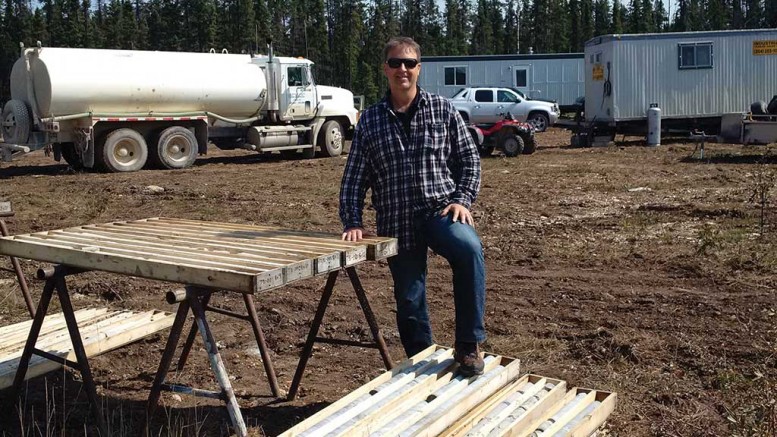
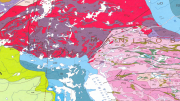
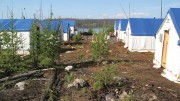
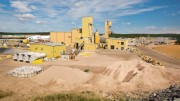
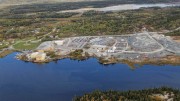
Be the first to comment on "Rockcliff expands presence in Manitoba"